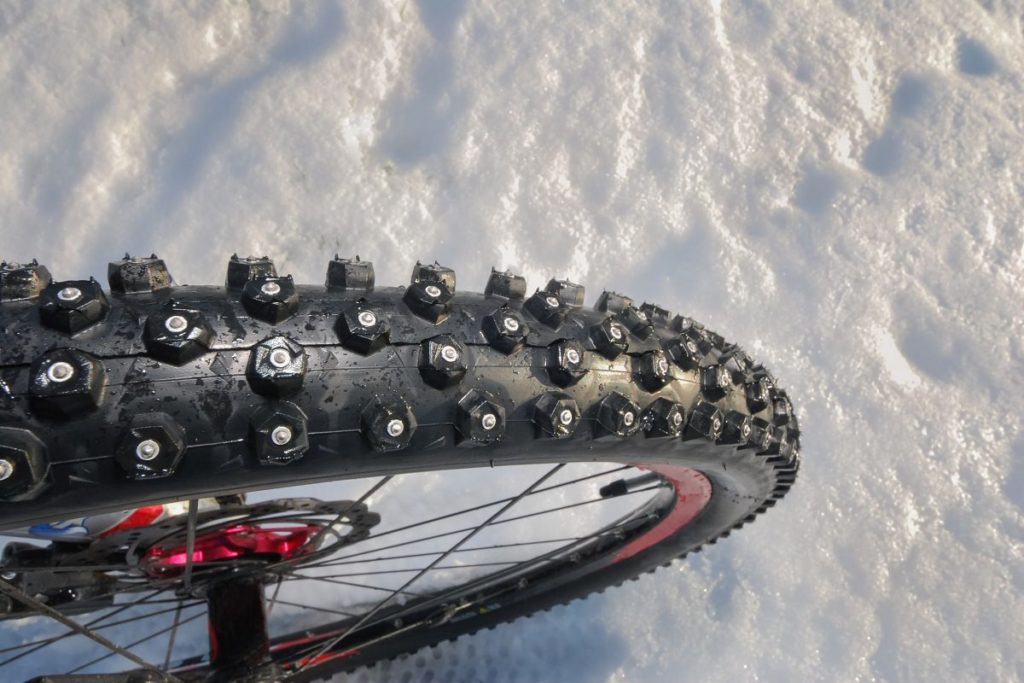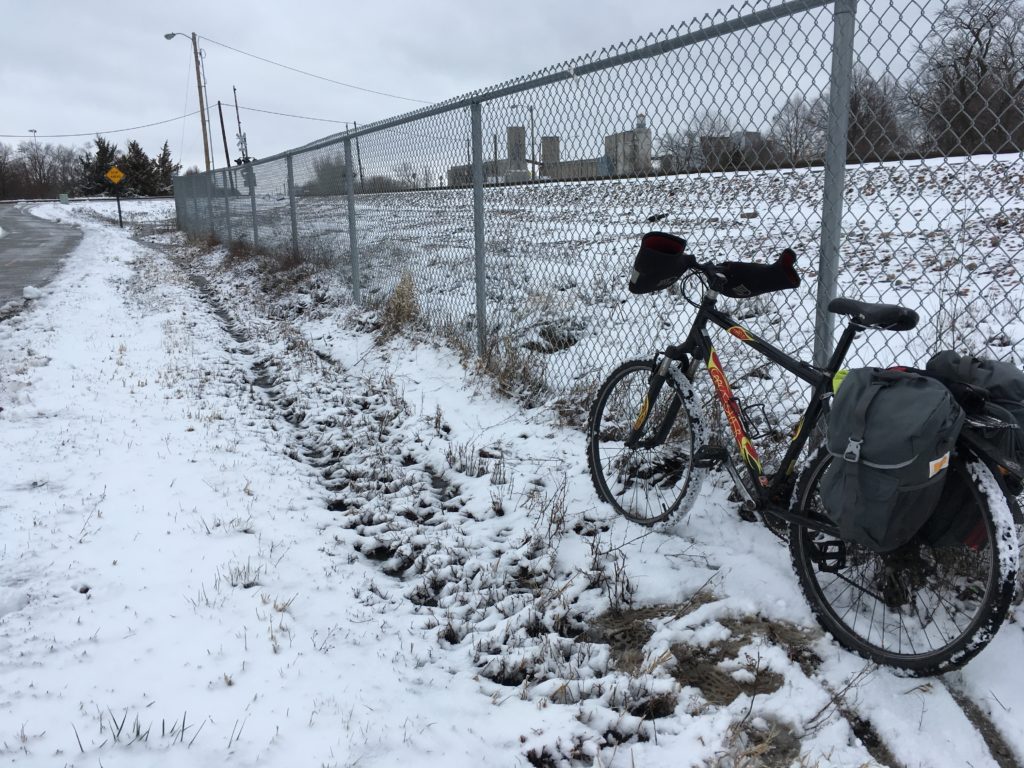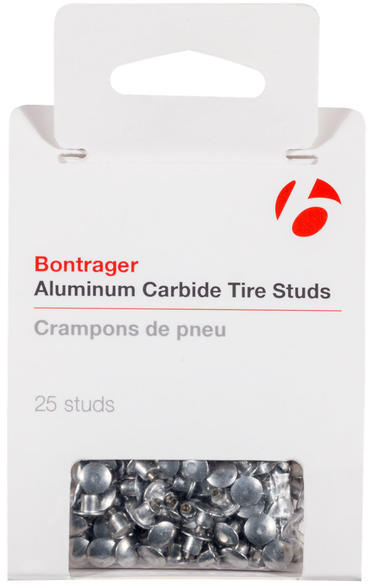I see plenty of tracks around, so I know quite a few of you are riding in this weather. What works for you? For some it’s having a fat bike, they’re the ones hoping for snow and freezing temperatures to get out on the trails. Others are happy with pogies (bar mitts) and winter cycling boots or good shoe covers on gravel or trails. For others, it’s hand and foot warmers that once activated keep you warm for hours. I’ve also seen some in face masks when it dips below 50, so whatever works for you is fine.

I rode all through last winter on my old beater mountain bike, mostly just around town. The shifter cables and brakes froze up so eventually it rode like a single speed, the winter choice of many; fewer moving parts. I’d always wanted studded mountain bike tires for it’s 26″ wheels, but didn’t look too hard to buy some. This winter I’ve put some old but barely used studded tires I found in the garage on my old commuter, since I found myself with two commuter bikes, having gotten one back that was on loan. Steve bought this set of tires 20 years ago and only used one of them. You can put a studded tire on just the front wheel to help with steering if you don’t want to use two. The rubber is so good that there are no checks or cracks, and one looks new. The studs are not tungsten carbide like what you would buy today, so we’ll see how worn and rusty they will look in the spring. One thing I had to learn was what 4.5-5 bars of pressure is converted to psi, as that is what is printed on the sidewall. (about 65-73 psi, more than I would usually use)

I know I could be riding the old beater bike in this little bit of snow that we have, but here are some of the things I’ve learned about riding studded so far. It is less stressful. I find myself always a little tense and hyper-vigilant about the very real possibility of slipping on packed snow/ice and “snirt.” Snirt, that grayish dirt/ snow mix that falls off cars, is still a little sketchy if it’s a big pile, but more manageable when riding studded. To ride anywhere from where I live after much of a snow requires navigating minimally plowed and often ice-rutted streets full of snirt. Many area sidewalks don’t get shoveled. With studded tires there is more rolling resistance, so it may be necessary to allow more time, but not more than the slow pace of hyper vigilance. You may also build more heat since you’re working just a little harder. My tires are not wider than common commuter width, certainly less than mountain bike tires so they actually bite through the snow to better connect with the road surface rather than float over the snow. In deeper, loose snow I’ll be on the fat bike since there is nothing for the studs to grab in those conditions. Studded fat bike tires are available, but I don’t think I’ll need any that badly. It is possible to buy your own studs, or even use short screws, and make your own if you’re willing to spend the time. As conditions change I’ll be learning more, but so far I think they’re great.

I’ll include the link to a good article I included last year about riding on snow and ice, for review.
https://www.icebike.org/winter-cycling-techniques-for-any-kind-of-snow-and-ice/
